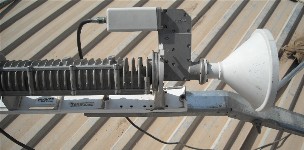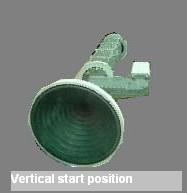| Home Login Register |
| Satellite Internet forum › HughesNet and Hughes HX VSATs › Hughes system Mosul, Iraq |
|
Pages: 1
|
Hughes system Mosul, Iraq(Read 17474 times) |
|
JonnyRotten
Member
★★ Offline Posts: 24 |
Aug 20th, 2008 at 8:18am
|
| Back to top |
IP Logged
|
|
Eric Johnston
Senior Member
★★★ Offline Posts: 2109 |
Reply #1 - Aug 20th, 2008 at 9:27am
|
| Back to top |
IP Logged
|
|
Eric Johnston
Senior Member
★★★ Offline Posts: 2109 |
Reply #2 - Aug 20th, 2008 at 11:04am
|
| Back to top |
IP Logged
|
|
allenatkison
Member
★★ Offline Posts: 6 |
Reply #3 - Aug 31st, 2008 at 7:35am
|
| Back to top |
IP Logged
|
|
wafanet
Senior Member
★★★ Offline Posts: 134 |
Reply #4 - Sep 1st, 2008 at 2:01pm
|
| Back to top |
IP Logged
|
|
JonnyRotten
Member
★★ Offline Posts: 24 |
Reply #5 - Sep 3rd, 2008 at 11:47am
|
| Back to top |
IP Logged
|
|
A.Walker
Senior Member
★★★ Offline Posts: 316 |
Reply #6 - Sep 3rd, 2008 at 1:50pm
|
| Back to top |
IP Logged
|
|
James-BW
Senior Member
★★★ Offline Posts: 65 |
Reply #7 - Sep 3rd, 2008 at 2:06pm
|
| Back to top |
www.freedomsat.com a high-speed Satellite Internet solution that delivers fast and reliable internet to difficult to connect spots around the world.
IP Logged
|
|
James-BW
Senior Member
★★★ Offline Posts: 65 |
Reply #8 - Sep 4th, 2008 at 10:52am
|
| Back to top |
www.freedomsat.com a high-speed Satellite Internet solution that delivers fast and reliable internet to difficult to connect spots around the world.
IP Logged
|
|
JonnyRotten
Member
★★ Offline Posts: 24 |
Reply #9 - Sep 8th, 2008 at 4:22pm
|
| Back to top |
IP Logged
|
|
Eric Johnston
Senior Member
★★★ Offline Posts: 2109 |
Reply #10 - Sep 8th, 2008 at 6:22pm
|
| Back to top |
IP Logged
|
|
JonnyRotten
Member
★★ Offline Posts: 24 |
Reply #11 - Sep 9th, 2008 at 12:46pm
|
| Back to top |
IP Logged
|
|
Eric Johnston
Senior Member
★★★ Offline Posts: 2109 |
Reply #12 - Sep 9th, 2008 at 6:04pm
|
| Back to top |
IP Logged
|
|
USN - Retired
YaBB Moderator
★★★★★ Offline Posts: 837 Kentucky (USA) |
Reply #13 - Sep 9th, 2008 at 7:58pm
|
| Back to top |
USN (Ret)
IP Logged
|
|
JonnyRotten
Member
★★ Offline Posts: 24 |
Reply #14 - Sep 10th, 2008 at 10:21am
|
| Back to top |
IP Logged
|
|
Eric Johnston
Senior Member
★★★ Offline Posts: 2109 |
Reply #15 - Sep 10th, 2008 at 12:47pm
|
| Back to top |
« Last Edit: Sep 10th, 2008 at 2:00pm by Eric Johnston »
IP Logged
|
|
JonnyRotten
Member
★★ Offline Posts: 24 |
Reply #16 - Sep 12th, 2008 at 2:34pm
|
| Back to top |
IP Logged
|
|
Eric Johnston
Senior Member
★★★ Offline Posts: 2109 |
Reply #17 - Sep 12th, 2008 at 7:35pm
|
| Back to top |
IP Logged
|
|
bigdawgs23
Member
★★ Offline Posts: 2 |
Reply #18 - Dec 21st, 2009 at 8:04pm
|
| Back to top |
« Last Edit: Feb 21st, 2015 at 3:53pm by Admin1 »
IP Logged
|
|
USN - Retired
YaBB Moderator
★★★★★ Offline Posts: 837 Kentucky (USA) |
Reply #19 - Dec 21st, 2009 at 9:01pm
|
| Back to top |
« Last Edit: Dec 22nd, 2009 at 10:41pm by USN - Retired »
USN (Ret)
IP Logged
|
|
bigdawgs23
Member
★★ Offline Posts: 2 |
Reply #20 - Dec 22nd, 2009 at 6:48pm
|
| Back to top |
IP Logged
|
|
Pages: 1
|
Email me: eric@satsig.net
Powered by YaBB 2.5.2!
YaBB Forum Software © 2000-. All Rights Reserved.
Disclaimer, Terms of Use and Privacy Forum User Agreement Forum rules Cookie policy.











